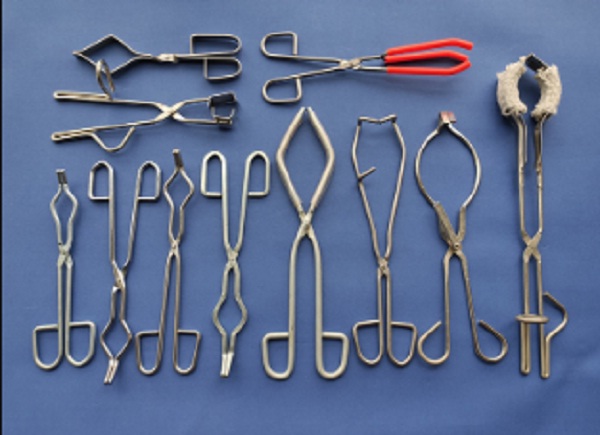The field of laboratory at first impression is associated with large automated equipment. Which are responsible for carrying out highly delicate. And currently if there are these types of activities but there are also much simpler tasks. That need to be done and need simple appliances for its execution. That's why today you will know 5 reasons why not crucible tongs must be missing in a laboratory.
What are crucible tongs?
At some point while working with some source of heat for techniques or processes of heating, sterilization, calcination or other. Must touch, lift, move or move the container being by using. This is where the crucible comes into play which is a vessel of somewhat rounded ceramics special for work at high temperatures. And the tweezers so necessary for their manipulation as soon as they are exposed to heat.
So we can define crucible clamps as a modified clamp-type tool, special for holding laboratory crucibles. Basically it is a safety device that provides protection against heat or chemical burns. They are similar in shape to a scissor, replacing the sharp blades with a pair of jagged tips.


What are crucible tongs used for?
Being a safety device against burns, all its use is limited to what is the manipulation of instruments or materials heat. So based on this we can mention the following uses:
Collection, handling and extraction of hot containers.Moving or displacing crucibles containing toxic materials or possess high temperatures.
In industrial use they are employed in metal or glass factories and they are of enormous sizes, so much so that it takes two people for their manipulation.
Types of crucible tongs
There are currently three types of crucible clamps, which are the following:
Load-bearing: They are those that are used to place the hot metal in the containers or molds. They are of use industrial.De latching: Own the common design adding one or more hitch bars to facilitate its lifting.Without hooking: They are the typical tweezers for crucible free of hitch bars, however possess a clamp adjustable.


What are crucible tongs made of?
This type of tweezers must be highly resistant, in addition from this according to specific needs their characteristics vary.
For example, the tips can be toothed, bifurcated or smooth. There are varieties of lengths that are adapted to the needs of their use, such as the size of the oven.
Then the most important thing for their resistance would be the material from which they are made. It must be a durable material such as steel, stainless steel, brass or platinum. Apart from that, it has a system of handles usually made of resistant plastic so that it does not transfer heat to the hands of those who handle them.
Safety precautions for the use of the tweezers
In addition to knowing its correct grip shape and the functions for which they are made, these should also be followed safety recommendations.
Safety gloves should always be used heat resistant, safety glasses and other protective equipment such as dressing gown or apron.They should always be cleaned before use to
eliminate substances that cause slippage.Store them in dry and safe places that delay or avoid his deterioro.No must be used for electrical purposes under no circumstances.
These are the five reasons why crucible tweezers should not be missing in a laboratory. They are essential safety elements that will make it easier for us to work with heat. If you want to know more about laboratory materials, be sure to check out our upcoming publications.

